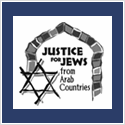Jewish History
The roots of Morocco’s Jewish communities date back to 587BCE, when Jewish refugees, fleeing the Babylonian destruction of Jerusalem and its Holy Temple, crossed over to North Africa and settled in Morocco’s Anti-Atlas region. There, they lived among the local Berber tribes, some of whom, it is believed, adopted Judaism and later fought against the Arab conquest. During the Roman Empire, the Jewish Diaspora of Israel spread throughout North Africa’s Mediterranean coast. In 70 CE, following the Roman destruction of the of the Temple of Jerusalem, additional Jewish refugees settled in Morocco.
At the end of the 7th century the Islamic Conquest reached Morocco, and, once again, Morocco experienced an influx of Jews. Under Islam, Jews were now forced to live as subordinate, second class “dhimmis“. The situation of Jews and Christians in Morocco worsened in 1146, when the Almohades dynasty came to power and dropped the jizha (tax demanded of dhimmis), but demanded that Jews convert to Islam or be killed. Those who converted were required to identify themselves by wearing a specific yellow head garment, and lived as branded unbelievers who were subjected to severe anti-Jewish oppression and violence. By the 13th century, when the berber Marinid dynasty gained power and eased religious restrictions, Jews were once again allowed to live openly.
As Jews were expelled from Spain and Portugal in 1492, thousands more fled to the the Moroccan Jewish “mellahs”, or urban Jewish districts and quarters designated by the Sultan. Jewish refugees of the Spanish Inquisition were unwelcome by local Muslims and many were subjected to violence, famine, and a struggle for survival. The Sephardic refugees were known as megorashim ( those expelled) to differentiate them from Morocco’s Mizrahi toshavim (residents).
In the 17th century, the Alawids came to power and Jews continued to live as dhimmis, forced to pay exorbitantly high taxes and move into mellahs throughout the country. In 1670, a prominent Jewish councilor, Abu Bakr, was burned in public in order to arouse terror among Jews. During this same time, synagogues were destroyed and Jews were expelled from the region. Continued poor treatment of the Jews occurred until 1863, when Sir Moses Montefiore was sent by the British to help release 10 Jewish men imprisoned in Morocco under suspicion of killing a Spaniard. Montefiore succeeded in liberating the prisoners and the Sultan published an edict granting equal rights to Jews. Despite this edict, Jews still faced discrimination and violence.
By 1930, there were 225,000 Jews living in Morocco, constituting the largest population of Jews in North Africa. When Nazi anti-Semitic decrees prohibited Jews from participating in public functions, Mohammed V refused to abide by such rules and instead invited all the rabbis of Morocco to throne celebrations. The declaration of the State of Israel in 1948, however, brought forth rioting and anti-Semitic sentiments within Morocco’s Arabs, resulting in 44 Jewish deaths and the emigration of 18,000 Moroccan Jews to Israel. Morocco declared its independence in 1956 with several political positions being held by Jews. The same year, Jewish emigration from Morocco to Israel was suspended, but in 1963 the ban was lifted and some 100,000 Moroccan Jews immigrated to Israel. The Six Day War in 1967 reignited Arab-Jewish tensions and by 1971, the Jewish population in Morocco had decreased to 35,000. Today, 3,500 Jews remain in Morocco and, although small, the Jewish community plays a significant role in politics and culture.



